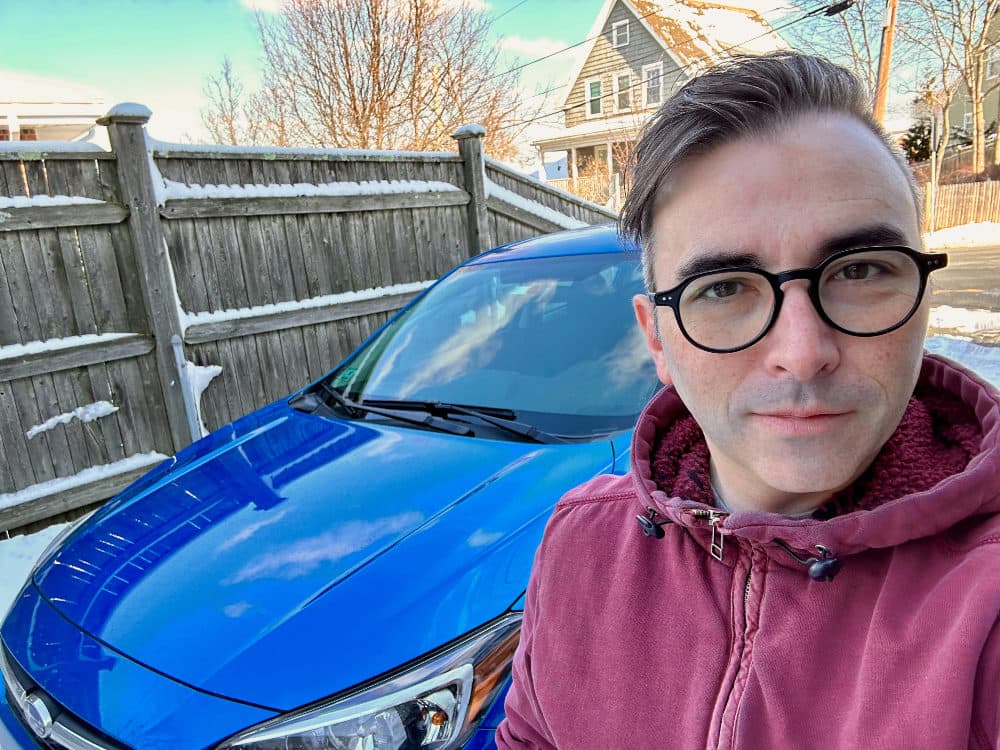Advertisement
Commentary
The profundity of driving a stick shift

I’m driving to work on the last stretch of a long commute, wending through snow-slick roads in Weston, when I come to what I like to think of as “the big turn.” It’s a left that usually involves finding just the right gap in the oncoming traffic — a veritable parade of luxury SUVs — to slip through. The perpendicular street is also an incline, so you really have to punch it. This is where driving a car with a stick shift comes in handy.
I wait on the edge of the double yellow line with my left foot negotiating the clutch and my right foot counter-offering on the gas. My left hand is ready to pull the wheel hard, and my right hand is poised to shift. When in the distance I see what looks like a large enough space in the oncoming traffic, I give the engine a little rev — not aggressively, mind you, just to let the car know we’re about to go. And then the gap appears, and we’re off. Right foot to the floor as my left foot releases, I slip through the line of cars. My right hand instinctively moves the gear shift into second. It’s smooth sailing from here.
There’s a feeling — if you’ve ever driven stick, you know it — that the machine isn’t made for you; rather, you are made for the machine. When you’re behind the wheel of a manual transmission car, you have so many points of contact, you can almost feel like you’re part of the vehicle. A manual transmission is needier than an automatic; it wants every one of your limbs engaged. Left hand on the wheel, right hand on the stick. Left foot on the clutch, right foot on the gas. You are just another lever operating the gears — in sync with the machine. You’re like Tom Cruise wearing his exoskeleton mech-suit in “Edge of Tomorrow,” but, you know, less thwarting an alien invasion, and more picking the kids up from school. (Listen, we tell ourselves the stories we need to hear.)

The thing is, a lot of the time, I feel out of sync — like I’m the one stuck between gears. Life sometimes feels like that time, many years and many cars ago, when my clutch line snapped, and I couldn’t shift my car into first. It’s like the gears are grinding, and I’m going nowhere. And I’m on a hill. And it’s snowing. I don’t know if this is a product of our particular moment — having just lived through a time when the pandemic altered our way of living so profoundly — or if maybe it’s just a season in my own life. Maybe it’s middle age. Whatever it is, I feel it often, and I think this is why driving my little blue Subaru Impreza with its manual transmission can feel profound.
In fairness, I suspect that manual transmission vehicles are not long for this world. Before buying my little blue Subaru, I hadn’t driven a standard since 2013, when my wife and I donated our well-loved 2003 Honda Civic to WBUR. A string of trusty Subarus followed, all automatic transmission, as well as a fuel-efficient Nissan I bought when I got my current job with its long commute. When it began showing signs of wear and tear, I looked exclusively at electric vehicles — not Teslas, mind you, I’m an educator with a bank account to match — more like a Nissan Leaf or plug-in Prius. Maybe that would have been the more responsible choice. But when I happened upon a 2020 manual transmission Impreza with less than 17,000 miles on it, there was no turning back. Before I knew it, I was test driving (I stalled it only once) and signing papers and switching plates and holding a new set of keys.
The thing is, a lot of the time, I feel out of sync — like I’m the one stuck between gears.
A manual transmission car comes with its own personality, its own quirks. In a way, you need to relearn how to drive with each new vehicle. You have to find that sweet spot where the clutch lets go and the gas kicks in, you have to figure out when to shift — let it growl a bit, or shift before it gets there? You need to find the stall point where too little gas means the engine shakes to a stop. But you do; you learn the machine, and — if you’ll allow me — the machine learns you. You sync up. And when you’re responding to the car, and it is responding to you, there’s a feeling that all is well.
There are downsides of course. I’m told that manual transmission cars are less fuel efficient (but who knows, really, the opposite was true years ago), though that feels like it depends on how you drive. Also, having to constantly shift in and out of gear makes driving in traffic more of a chore than it already is. But even this — what I think of as the resistance in the materials — can have its benefits: it forces me to be more present.
I’m sure I’m guilty of glamorizing an outmoded technology. There is, no doubt, a sizable serving of nostalgia here. But I’m okay with that, because these days, rather than complain about my commute, I think of it as an opportunity to commune with the machine, like I was made for it.
And whenever I’m feeling between gears myself, and out of sync, I depress the clutch, snap it into first and hit the road. I feel, if only for a moment, like I’m in control — and, if called upon, I could maybe even thwart an alien invasion.
